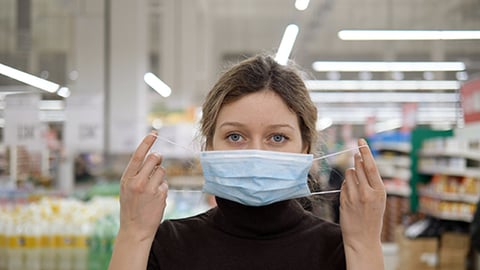NGA Cheers OSHA’s Decision Not to Implement Emergency COVID Standard at Retail
The National Grocers Association (NGA), the trade association representing the independent supermarket industry, has voiced its approval of the Labor Department’s decision to discontinue its implementation of an emergency workplace COVID standard that the trade group characterized as “burdensome and unnecessary.”
The rules, which have been under White House review since late April, were originally expected to apply to all workplaces, including supermarkets, “and create a regulatory and paperwork nightmare for independent grocers,” according to NGA. Following intense grocery industry pressure, the recent Centers for Disease Control and Prevention’s (CDC) masking guidance and considerable progress against the pandemic, OSHA determined that the emergency standard should only apply in “settings where employees provide health care or health care support services, including skilled nursing homes and home health care, with some exemptions for health care providers who screen out patients who may have COVID-19,” as U.S. Secretary of Labor Marty Walsh noted in a recent Department of Labor bulletin.
“With the end of the pandemic in sight, any tightening of COVID safety rules this late in the game would present an unnecessary burden to independent community grocers who have been proactive in adopting safety measures since the start of this crisis,” said Chris Jones, SVP of government relations and counsel at Washington, D.C.-based NGA. “Kudos to the Biden administration for this good-sense move as America’s businesses are trying to get back to normal.”
In May, NGA and its food industry partners sent a letter to the White House Office of Management and Budget urging that the agency reject an OSHA Emergency Temporary Standard (ETS) submitted by the Department of Labor. The letter followed NGA’s initial correspondence to OSHA and subsequent White House meetings at which Jones contended that an ETS is no longer needed, given the amount of people already vaccinated, declining case rates and the protocols that grocers already have in place to protect associates.
Walsh had already delayed the release of the ETS in April, following President Joe Biden’s executive order setting a March 15 deadline for OSHA to decide whether a new standard was needed.
The agency’s move to exclude front-line grocery and meatpacking workers from the ETS was condemned, however, by the Washington, D.C.-based United Food and Commercial Workers (UFCW), which represents 1.3 million food and retail workers.
UFCW International President Marc Perrone countered that the “new COVID workplace safety standard from OSHA represents a broken promise to the millions of American workers in grocery stores and meatpacking plants who have gotten sick and died on the front lines of this pandemic. Vaccinations are helping us take control of this pandemic, but the danger for these essential workers is far from over. Thousands of front-line food workers are still at risk of infection.”
According to Perrone, “The current COVID safety guidelines in place are unenforceable and leave millions of essential food, retail and pharmacy workers to fend for themselves as they face hundreds of potentially unvaccinated customers every day.”
Adding that voluntary guidelines were “not enough” to ensure safety from COVID, he noted that UFCW would put pressure on OSHA “to immediately increase workplace safety inspections in grocery stores, meatpacking plants and health care facilities to make sure workers are kept safe and all employers are held accountable for protecting them on the job.”
UFCW was one of the first groups to demand an OSHA ETS in testimony to Congress at hearings in the spring of 2020.
The union’s latest estimates showed that among its members nationwide, there were 463 front-line worker deaths and at least 93,700 infected or exposed, including 185 grocery worker deaths and at least 42,000 infected or exposed.






